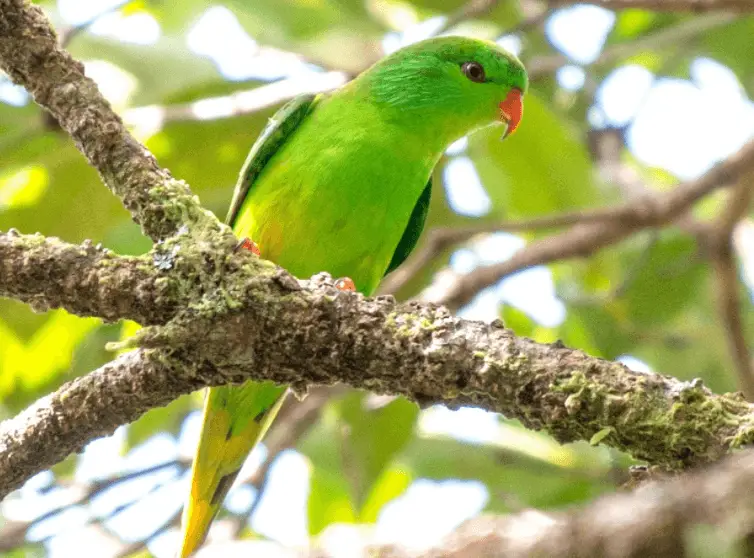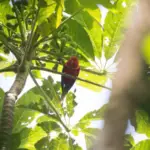
Meek’s Lorikeet 16 cm; 21–32 g. Green, bright below, duller olive on wings and tail; bill and legs orange; crown faintly tinged greyish; ear-coverts and sides of neck show light green streaking on dark; mantle tinged brown;
yellowish-white band on the underside of secondaries; tail yellow below. Immature has a shorter tail and a paler bill with brownish markings near the base.
Systematics History
A member of the C. palmarum group (which see). Monotypic.
Subspecies
Monotypic.
Distribution
Habitat
Canopy of foothill and montane moist forest, 300–1500 m, even extending into stunted cloud forest at 1700 m; on Santa Isabel present at 900–1000 m, on Kolombangara only common from 1300 m, and on Guadalcanal not found below 1000 m. Birds on Kolombangara were observed to move downslope in day to forage, sometimes to the coast.
Movement
Described as rather nomadic on Bougainville; possibly so at higher altitudes on all islands.
Diet and Foraging
Blossoms of Syzygium, Metrosideros, Mearnsia, and coconuts were recorded; also soft fruit and berries.
Sounds and Vocal Behavior
Commonest call a thin high-pitched “tseek”, given singly or in loose series. When feeding a quieter continuous buzzy rattle or a series of screeches.
Breeding
Only Meek’s Lorikeet nest known, containing small young, was in a large clump of moss on tree trunk 6 m above ground in stunted moss forest at 1550 m on Kolombangara, in Aug.
Conservation Status
Not globally threatened. Currently considered Near Threatened. CITES II. A BirdLife “restricted-range” species. On the summit of Kolombangara, one of the three most abundant bird species.
Although generally in small parties, birds congregate in larger numbers at blossoming trees.




















